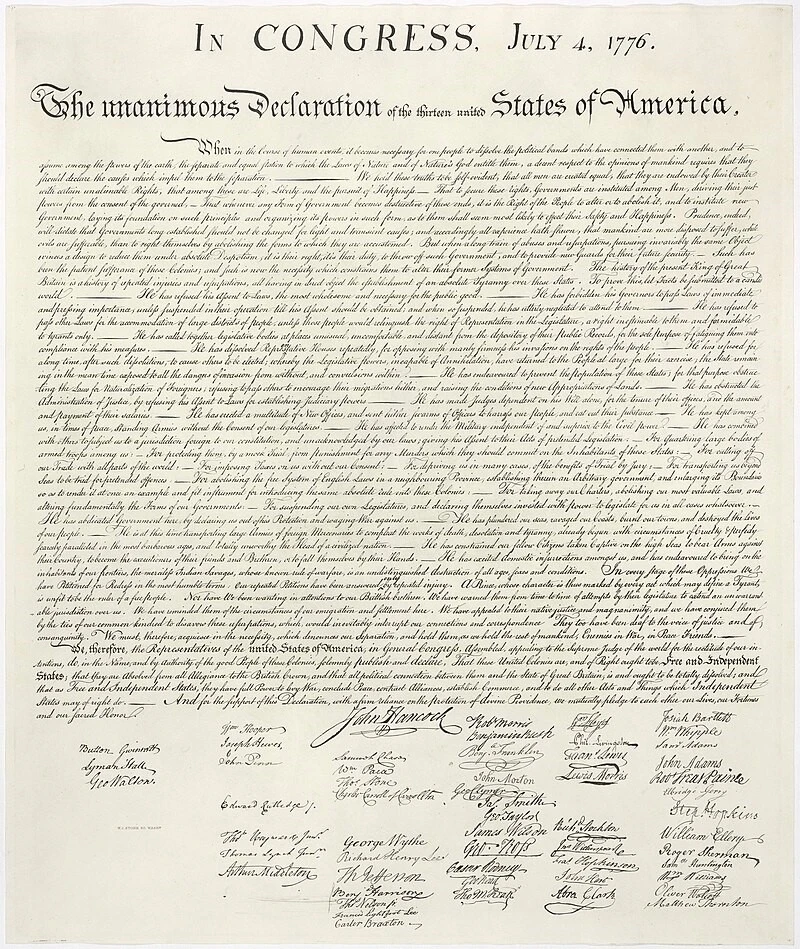

Table of Content
Discover How the John Hancock Signature Came to Represent the Act of Signing Itself
In the rich tapestry of American history, few names resonate with as much significance as John Hancock. Beyond his role as a Founding Father of American and the first signatory of the Declaration of Independence, Hancock’s signature stands out as a symbol of courage and rebellion.
The signature, while nothing special in terms of design or symbolism, has resulted in a great cultural shift. So popular was the act that today, “Adding your John Hancock” to a document has become a common phrase to represent being the first one to sign a document.
As a brand, such an iconic symbol can be a source of strong brand building, as it allows you to establish trust with the consumers. Therefore, businesses often hire signature logo design services to create such ornate and unconventional logos for them. But can you be sure about how successful will they be?
To answer that, let’s dive into the multifaceted legacy of John Hancock’s iconic signature, and unwind the intricate story behind this historically significant autograph. By understanding its context, you will be able to figure out the chances of success for your signature logo.
Who was John Hancock?

John Hancock, a prominent figure in American history, is widely recognized as the inaugural signatory of the Declaration of Independence. Born in Braintree, Massachusetts, in 1737, Hancock was not only a successful entrepreneur but also a skilled politician. His journey into public service began in 1768 when he was elected to the Massachusetts House of Representatives. In this role, he beautifully advocated for colonial rights, highlighting his dedication to the principles that would later define the American Revolution.
Beyond his political pursuits, Hancock held a distinguished position as one of the wealthiest people in America during his time. His wealth played a pivotal role in supporting the revolutionary cause, as he contributed significantly from his own fortune.
However, it was Hancock’s undeniable mark on American history that elevated him to the status of a national hero. The momentous occasion unfolded on July 4, 1776, when he added his signature to the Declaration of Independence. Renowned for his distinctive approach, Hancock famously penned his name in large, bold letters at the bottom of the document. Although a popular legend suggests that he did so with the intent of allowing King George III to read it without glasses, the truth of this myth remains uncertain.
Regardless of the myth’s accuracy, John Hancock’s signature stands out prominently, symbolizing the spirit of American independence for generations to come. His bold act of signing the Declaration has become an enduring representation of commitment to revolutionary ideals and a pivotal moment in the birth of the United States.
The Origin of the John Hancock Signature
John Hancock’s place in American history is pivotal, marked by his courageous leadership during the revolutionary war and the eventual independence from British rule. The signing the Declaration of Independence in 1776 wasn’t just a formality; it was a bold and calculated assertion of independence from a colonial power, signifying the American people’s revolutionary spirit.
The historical context surrounding this monumental event raised John Hancock’s signature from a mere signature inked on paper to a symbol of defiance against British rule.
The Design of the John Hancock Signature

Beyond its historical significance, Hancock’s signature possesses an eclectic yet artistic flair that sets it apart. The looping, ornate script reflects a careful consideration of form and style, common among the aristocrats and other well-learned people of the time, and common among vintage fonts from that era.
Comparisons with other signatures of that time highlight the unique qualities that make Hancock’s autograph a distinctive work of art. Moreover, various speculations about the personal touches and stylistic choices add a certain mystery to this captivating signature.
Impact of the John Hancock Signature on American History
Hancock’s signature has evolved beyond its role as a signature on an important document in history; it became a symbol of rebellion and leadership in a time when the people needed it. While seemingly simple, the bold actions of his pen turned it into a revolutionary statement, forever altering the perception of the Declaration of Independence.
Even in the present day, the image of Hancock’s signature evokes a sense of determination and unwavering commitment to a cause, representative of the American values.
Significance in Modern Context – How It Became the Symbol of Signing A Document Itself

In the modern legal landscape, signatures play a crucial role in validating documents, from simple contracts to complex legal papers. Hancock’s signature, with its historical weight, represents the importance of that signature as a symbol of authenticity.
Understanding the importance of signatures in legal contexts allows us to appreciate how Hancock’s legacy extends beyond the pages of history and into the realm of modern documentation. That is well represented by the fact that today, a person’s signature in known as their “John Hancock” in American colloquial.
Moreover, for brands that use signature logos that use handwritten scripts in their design, the act of adding that to documents adds a certain level of trust and charm.
The Historical Significance of John Hancock’s Signature for Collectibles and Memorabilia
The rarity and value of John Hancock’s authentic signature make it a coveted collector’s item. The market for memorabilia bearing his autograph reflects the enduring fascination with this historical figure, and not just among the Americans.
Stories of notable auctions or sales of items signed by Hancock further underscore the lasting impact of his signature on the world of collectibles, turning a mere signature into a tangible piece of history.
The Legacy: What Does the John Hancock Signature Mean for the American People?
Public perceptions of John Hancock’s signature vary, creating a varied yet nuanced narrative. For some, it is a symbol of patriotic heroism; a bold mark that encapsulates the revolutionary fervor. Others may question its authenticity or challenge its historical significance, adding an element of controversy to this iconic autograph.
However, whatever the perception may be, exploring its portrayal in popular culture and media offers a deeper understanding of how the significance of the John Hancock signature is undeniable. And whether it was important in the American Revolution, there is no doubt that it played an important role in shaping the US legacy as “The Land of the Free, and the Brave”.
FAQs
| What pen did John Hancock use to sign the Declaration of Independence? The John Hancock signature is penned using a quill pen, as was the norm at the time. |
| What Museum has the real John Hancock signature on display? Fans can view the John Hancock signature on display at the Museum of Fine Arts in Boston, MS. |
| What is the Dunlap Broadside? The Dunlap Broadside is the first set of printed copied of the declaration of independence, named after John Dunlap who produced them on July 4, 1776. |
| Who were some of the other signatories of the Declaration of Independence? Besides Hancock, other signatories include Benjamin Franklin, Thomas Jefferson, John Adams, Samuel Adams, and more. |
Conclusion
To sum it up, the John Hancock signature signifies not just an inked mark on paper, but as a symbol of resilience, defiance, and the spirit of a revolutionary era against a cruel colonial power. Its legacy is multifaceted, blending artistry, historical significance, and modern-day cultural significance into a picture that continues to captivate and inspire generations.
Therefore, if a business wants to embody that within their logo, then opting for a signature-style logo is a great option to explore.

Logopoppin
Logopoppin is a graphic design agency that specializes in logo designing, web development, video production and advanced branding services. We love to innovate businesses with new age technologies, allowing them to improve their visual reputation.




